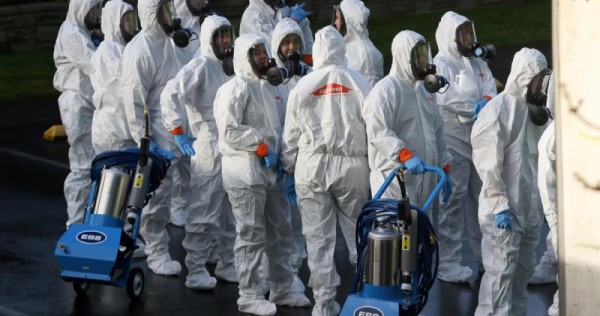WASHINGTON – Coronavirus infections rose above 13 million across the world on Monday (July 13), according to a Reuters tally, climbing by one million in just five days in a pandemic that has killed more than half a million people.
World Health Organisation (WHO) chief Tedros Adhanom Ghebreyesus said there would be no return to the old normal for the foreseeable future, with too many countries headed in the wrong direction.
“Let me be blunt, too many countries are headed in the wrong direction, the virus remains public enemy number one,” he told a virtual briefing from WHO headquarters in Geneva.
“If basics are not followed, the only way this pandemic is going to go, it is going to get worse and worse and worse. But it does not have to be this way.”
The Reuters global tally, which is based on government reports, shows that the disease is accelerating the fastest in Latin America. The Americas account for more than half the world’s infections and half the deaths.
Parts of the world, especially the United States, with more than 3.3 million confirmed cases, are seeing huge increases in a first wave of Covid-19 infections, while others “flatten the curve” and ease lockdowns.
Other places, such as the Australian city of Melbourne and Leicester in England, are implementing a second round of shutdowns. Chinese-ruled Hong Kong, albeit with a low 1,522 cases, is tightening social distancing measures again amid growing worries about a third wave.
The US reported a daily global record of 69,070 new infections on July 10. In Brazil, 1.86 million people have tested positive, including President Jair Bolsonaro, and more than 72,000 people have died.
The US state of Florida reported a record increase of more than 15,000 new cases in 24 hours on Sunday, more than South Korea’s total since the disease was first identified at the end of last year.
Coronavirus infections were rising in about 40 US states, according to a Reuters analysis of cases for the past two weeks compared with the prior two weeks.
Yet US President Donald Trump and White House officials have repeatedly said the disease is under control and that schools must reopen in the autumn.
“The President and his administration are messing with the health of our children,” House Speaker Nancy Pelosi said on CNN’s State Of The Union programme.
“We all want our children to go back to school, parents do and children do. But they must go back safely.”
Stay at home
Hungary has imposed new restrictions on cross-border travel as of next Wednesday in order to prevent the spread of the coronavirus after a surge in new cases in several countries, Prime Minister Viktor Orban’s chief of staff said on Sunday.
The leader of the Spanish region of Catalonia called on residents of an area that has seen a surge in coronavirus cases to stay at home despite a ruling by a judge who threw out a mandatory lockdown order for the district of 160,000 people.
Spain, which has been one of the European countries worst hit by the coronavirus, lifted nationwide confinement last month, when the pandemic seemed to have come under control.
The first case was reported in China in early January and it took three months to reach one million cases. It has taken just five days to climb to 13 million cases from 12 million recorded on July 8.
The number of cases is around triple that of severe influenza illnesses recorded annually, according to the WHO.
There have been more than 568,500 deaths linked to the coronavirus so far, within the same range as the number of yearly influenza deaths reported worldwide.
The first death was reported on Jan 10 in Wuhan, China, before infections and fatalities surged in Asia, Europe and later in the United States.
A WHO advance team has gone to China to investigate the origins of the new coronavirus, first discovered in the city of Wuhan.
The team’s members are in quarantine, as per standard procedure, before they begin work with Chinese scientists, WHO emergencies head Mike Ryan said
India, the country with the third-highest number of infections, has been contending with an average of 23,000 new infections each day since the beginning of July.
In countries with limited testing capacity, case numbers reflect only a proportion of total infections. Experts say official data likely under-represents both infections and deaths.
This article was first published in Asia One . All contents and images are copyright to their respective owners and sources.











